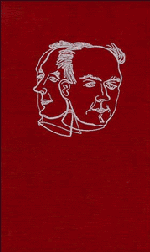Henry Cowell's “New Musical Resources”
Published online by Cambridge University Press: 05 June 2015
Summary
Background
The origins of New Musical Resources lie in Henry Cowell's period of study at Berkeley in 1914–17. His education up to that time had been rather unorthodox; as a consequence, he was taken to Berkeley in the fall of 1914 by his father, Harry, in the hope that his remarkable musical talents might find some appropriate outlet. Charles Seeger, then chair of the Music Department at Berkeley, arranged that the seventeen-year-old Cowell should study harmony and counterpoint with E.G. Stricklen and Wallace Sabin respectively. On Thursday afternoons, Cowell and Seeger met to discuss issues in contemporary music. According to Weisgall, it was also agreed that Cowell should “suspend free composition for a year,” though there is little evidence to support this in Lichtenwanger's catalog.
The consensus view is that Cowell started work on New Musical Resources in 1916, at Seeger's behest, though the exact reasons vary among sources. Lichtenwanger states that Seeger urged Cowell “to rationalize his manner of playing piano” Godwin and Weisgall concur that Seeger encouraged Cowell to “systematize his use of musical resources” while simultaneously creating “the initial repertoire embodying his innovations.” From approximately October 1916 to January 1917 (again, precise dates vary among sources) Cowell was in New York, where for a short time he was enrolled at the Institute of Musical Art. On his return to California, he and Seeger continued their discussions; but the study of harmony and counterpoint was replaced by that of written English, undertaken with his old Menlo Park friend and sponsor, Samuel S. Seward Jr. (who was also an English professor at Stanford). Work on New Musical Resources intensified, both during the time Cowell and Seward spent in army service at Camp Crane, Pennsylvania, and subsequently. Seward's importance to the project was stressed by Cowell in his original (unpublished) introduction to the book (see page (63) as well as in the new introduction he wrote in 1929, prior to publication.
- Type
- Chapter
- Information
- New Musical Resources , pp. 153 - 174Publisher: Cambridge University PressPrint publication year: 1996
- 1
- Cited by



